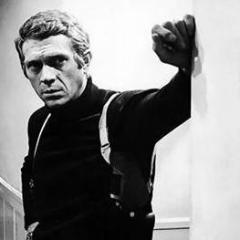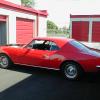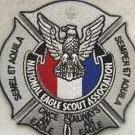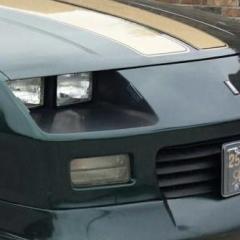
Mark
Members-
Posts
7,096 -
Joined
-
Last visited
About Mark
- Currently Viewing Forums Index
Previous Fields
-
Scale I Build
1/25
Profile Information
-
Full Name
Mark Budniewski
Mark's Achievements

MCM Ohana (6/6)
-
Moebius 1964 Mercury Comet Pro Touring
Mark replied to Justin Porter's topic in Car Kit News & Reviews
If you put the Moebius Comet and AMT Fairlane parts side by side, they'll look awfully similar. Same goes for Moebius versus AMT Ford pickup chassis, and Moebius '61 versus AMT '62 Pontiacs. -
If the item you want is a typical eBay auction (as opposed to a fixed price "Buy it Now"), remember, you only need to be high bidder for one second. The last one. Don't get into a whizzing match with anyone three days before the thing ends, just watch, wait, and pounce at the end.
-
1/8th scale T Bucket pinstripes in white ?
Mark replied to Jon Haigwood's topic in Model Building Questions and Answers
It seems to have gone extinct. That tape, and most of the dry transfer (rub-on) letters and numbers, were used mainly by architects and draftsmen, all of which have moved on to other means of doing their work. -
If you are building anything resembling a stock wagon, go for one of the resin bodies instead of the kit piece. The kit body is way off proportionally.
-
Does anyone casts a single 4bbl intake for a Hemi
Mark replied to Brutalform's topic in Model Building Questions and Answers
If you have one of the AMT pro street '70 Coronet kits, take a look at that. The dual overhead cam Hemi engine setup includes a single four-barrel carb intake that might look right on a regular 426 Hemi engine. -
Moebius 1/25 1964 Mercury Comet K-code
Mark replied to Justin Porter's topic in Car Kit News & Reviews
Not sure that hood was available on anything but the FX package cars. Hopefully the scoops are add-ons, or the scoopless hood is in there too. -
Does anyone casts a single 4bbl intake for a Hemi
Mark replied to Brutalform's topic in Model Building Questions and Answers
There weren't a lot of single four-barrel 426 Hemi intakes. Most 1:1 units resemble the Jo-Han piece which was in any of their Hemi engine cars that included a NASCAR version ('64 Plymouth, '69 Roadrunner, '70 Superbird to name three). MPC put one in some of their annual kits, but theirs is lame compared to the Jo-Han piece. There might be a kit or two with one that looks like the "tub" style used on other NASCAR engines of the period, but for a street or drag version the Jo-Han unit is what you want. Though stock 426 Hemis all used dual four-barrel carb setups (Chrysler wanted a higher CFM rating for Stock and Super Stock classes), there were single carb setups that were raced. Arlen Vanke did some development on single four-barrel setups as he ran them in AHRA GT classes in the late Seventies. Chrysler tried a single carb to try to get the Street Hemi past smog standards for '72, but couldn't quite get there. -
Holy cow! Eurosoft glazing putty got EXPENSIVE!
Mark replied to LDO's topic in General Automotive Talk (Trucks and Cars)
Too, with any of the two-part stuff, bagging the putty once opened is a great idea. Even better is to bag the putty and catalyst separately and don't store them right next to each other. I don't have experience with the U-POL product pictured, but other products of theirs are quite good. I'm seeing their stuff in auto parts stores (O'Reilly recently moved into my area after Pep Boys exited the parts business to concentrate on the repair shops). Excepting the U-POL which I don't know about, the other putties use the same catalyst as other two-part fillers. Those tubes separate, dry out, and crack open over time. You can get those catalyst tubes separately at Home Depot, Lowe's, what have you. Don't toss the big tube when the little one goes bad. -
Holy cow! Eurosoft glazing putty got EXPENSIVE!
Mark replied to LDO's topic in General Automotive Talk (Trucks and Cars)
The old, red, single-stage glazing putty, and old lacquer primers ALWAYS shrank. The putty is, at its essence, extremely unthinned lacquer primer. It was either Von Dutch, or probably Dean Jeffries, who started doing their stylized pinstriping in areas where the car had been "nosed" and "decked" (scripts and emblems removed from hood and deck lid). The pinstriping was done in part to help hide grinder marks in those areas, that flared up later after the primer and putty shrank under the lacquer paint applied over the work. -
Yes, the current convertible kit's body is relatively new tooling compared with the coupe. Convertible-related parts (like stock and custom tops) do not interchange exactly between "old" and "new" convertibles. Both now use the coupe interior, chassis, and other parts whereas the annual coupe and convertible kits each used their own tooling. (What remains of the original '63-'67 convertible is now part of the custom '68 kit that was reissued a couple of years ago.)
-
Is A Sealer Needed Over Primer?
Mark replied to oldcarfan's topic in Model Building Questions and Answers
You don't want to sand that sealer primer. Doing so "opens it up", the top coat will likely raise sanding scratches in that area. Anything I use lacquer paint on gets a quick blast of sealer primer. The sprays seem to have less "solids" and more "carrier" (reducer) lately, making the paint thinner and needing more of it to cover. The sealer helps reduce the possibility of scratches or imperfections showing through the primer. -
Asking ain't getting. Those listings have probably rolled over numerous times, possibly over multiple years.
-
There was also an ARDUN conversion for the 60. It doesn't look like the better known "big engine" setup though.
-
Through 1940 here. The 1941 Fords were a bit bigger and heavier, the 60 was passable in areas without a lot of hills but was borderline at best. It wouldn't have worked at all in a '41. During '41 Ford introduced a straight six, and also made an inline four that was created for pickups, but some claim a handful of them made it into cars. The inline engines had more torque than the miniature V8, so they were workable whereas the 60 really wasn't up to the job.





